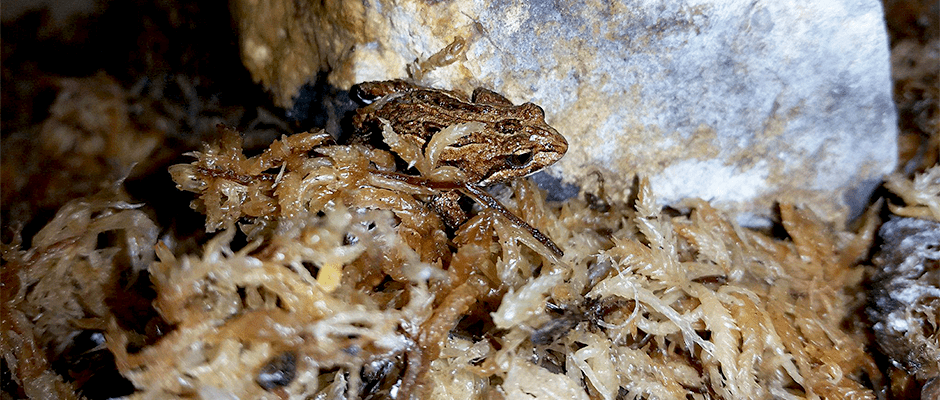Share this article
Frog species hosts but shows no signs of fungal disease
Researchers have documented another frog species that carries the deadly chytrid fungal disease but shows no symptoms, and they believe others may exist around the world, contributing to global amphibian die-offs without being affected themselves.
The common eastern froglet (Crinia signifera) is endemic to Australia, where the rapidly spreading amphibian chytridiomycosis was first discovered in the early 1990s before spreading across the planet. It is the only such reservoir host species that’s been tested in the area, said Laura Brannelly, postdoctoral researcher at the University of Pittsburgh and lead author of the Animal Conservation study. But others may exist nearby and elsewhere around the globe. Studies in the United States are looking into the existence of reservoir hosts in the Sierra Nevadas, she said. A 2012 study found that the Pacific chorus frog (Pseudacris regilla) is one of them.
“Some amphibian species are susceptible to the disease and are declining and other species seem to carry the fungus without any disease signs,” Brannelly said. “The disease is everywhere that there are frogs, especially where there have been declines in Central America and Australia.”
Brannelly and her colleagues first monitored the froglets in the field and determined their infection loads of the Batrachochytrium dendrobatidis, or Bd, fungus. Then, they brought the frogs into the lab to determine over a three-month period if their infection load remained high over time. Their ability to retain high infection loads suggested they would be a good reservoir host.
When the researchers checked for clinical signs of infection, the frogs appeared healthy. Researchers also looked at age structure of the population and found a healthy mix of younger and older individuals.
The team concluded the species is a competent reservoir host, likely adding to the declines in four frog species in the region — the alpine treefrog (Litoria verreauxii), northern (Pseudophryne pengilleyi) and southern corroboree frogs (Pseudophryne corroboree) and the baw baw frog (Philoria frosti).
Fungal spores can be passed from one frog to another or spread through the environment, Brannelly said. “In a lot of communities, the animals just kind of sit on top of each other,” she said. “We have seen the species sit right next to each other and pass it through touching.”
Knowing that the froglet can spread the disease without showing symptoms can affect conservation and management of other species, Brannelly said. Reintroductions of species could be directed to areas without common eastern froglets, she said. Northern corroboree frogs, for example, don’t need the areas of standing water that the froglets prefer.
“If a species can be in an area that common eastern froglets are not going to thrive in, then that’s a really good option,” she said.
Header Image: Chytrid fungal disease is killing off species of frogs around the world, but some frog species, such as the common eastern froglet, appear to carry the disease but show no symptoms. ©Bec Webb








